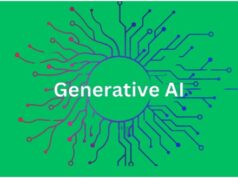An asset can be any item or instrument that a person or a company owns, and keeping the record of that very asset, and its whereabouts using a management software is called asset tracking. From smaller to big businesses, each one suffers from their assets and instrument going missing at least a few times in every one or two months. Losing the assets is never good for any organisation as getting new assets can cost them a hefty amount. The asset tracking systems simply help the organisations to avoid such situations and manage the asset in the most efficient way, saving a lot of their time, efforts as well as money.
![]()
![]()
Various Methods for Asset Tracking: The traditional way of tracking the asset is to keep the record of physical assets on excel sheets. But it is an outdated, complicated as well as time-consuming process. Most of the times, the management fails to keep the accurate record of the assets, and in between the process, these are often lost, damaged or stolen.
The new way of doing the same is to use a tracking software system. These systems are capable of keeping the record of every asset in an organisation in real-time, with the help of scanning tags attached to the assets. The tracking software can be used on a desktop or can be operated through a smartphone. The asset tracking software includes the setting up of a network configuration, scannable tags, scanners, a device to keep the software and manage the database, etc. Today, you are also provided with the option to integrate cloud with the tracking system, such that the asset-related information is updated in the cloud and the data is centralised at one place, that too in real-time.
With the advancement of technology, there have emerged different scannable tags, that include the following:
• Barcodes Labels: Barcode labels are one of the oldest types of tags that have been used to manage inventories and assets of various industries. It is one of the most cost-effective methods to track instruments in different environments and with maximum accuracy. The barcode label comes in different types, depending on the requirements.
• QR Codes: Quick Response codes are the new means for tracking the assets. A QR code scans the information from top to bottom and left to right, such that holding comparatively more information, like the product id, part numbers, dates, etc. When scanned, the QR code decodes the encoded information and stores it into the database.
• RIFD Tags: Radio Frequency Identification Tags are more useful than the traditional barcodes, as these not only track the assets, but also manage the inventory. The RFID tags are able to even keep the information of the places from where the assets crossed paths. With RFID tags, the visibility of the assets is increased, and even, if you are not able to see a particular object, you can track it through RFID.
• GPS: The Global Positioning System, though is mostly known for finding the locations on the map, these have been also embedded in software that helps track various types of assets. e.g. these are used to track vehicle, movements of kids as well as the online orders like food, etc.
• Beacons: A beacon is a micro-location based technology that makes use of the Bluetooth low energy (BLE 4.0) protocol to track the assets. This way, the system eliminates the need for bringing the beacon-enabled assets near to the scanner to track its location or other activities.
Industries that Use Asset Tracking: Asset tracking software development has got a huge scope in various industries, and most of the industries have already opted this very technology for their managing their assets. The various industries that use asset tracking software include:
• Construction industry (to keep the record of various instruments on the sites)
• Healthcare (tracking the patients, OT instruments, medical devices, etc.)
• Education (tracking the assets like lab instruments)
• Aviation (managing the aircraft asset cycle)
• Hospitality (organizing the supplies and equipment)
• Courier companies (tracking the inventory, pickup and delivery of couriers)
• Government Agencies (tracking the documents, IT equipment, etc.)
Asset tracking is best for big organisations with bigger inventories, where it is important to track the assets to avoid any kind of loss or theft. With the tracking, one can manage every single process related to the asset effortlessly. e.g. with the asset tracking software, the process in even a huge warehouse is streamlined. From order placement to getting the product and from receiving the payment to delivering the product, all are under surveillance, with the least chances of any mistake.
How does Asset Tracking Software Work?
Independent of the type of the industry, almost every tracking system works in the same way. The assets to be tracked are assigned unique identification number through any of the tracking methods, i.e. barcode, QR code, beacon, RFID tag or the GPS tag. This unique Id is created by encapsulating some of the important information related to the assets. The Id is registered in the software that holds similar data. Now there are various scanning devices at different places, where the asset will go and will get scanned. The scanned data is updated in the database on every single scan to keep the asset-related information update and in real-time. This way, even in a very complex and confusing process, you can track the assets quite efficiently.
Benefits of Using Asset Tracking Software: Asset tracking software is easy to handle and keep each information updated in the database. Using an asset tracking software help you save a lot of money as well as your precious time. Following are the major benefits of using asset tracking software:
1. The manual record-keeping always end up with multiple mistakes, but when the data is managed by an asset tracking software, the level of accuracy is higher.
2. Since the asset tracking software provides real-time tracking, it becomes easier to manage the assets without any hassle, as all the information about the location of the assets is automatically saved into the database.
3. Keeping the track of each asset through its lifecycle helps you make sure it is safe from theft or damage.
4. While dealing with lots and lots of instruments and other physical assets, it is quite natural for those assets to go missing. But with the asset tracking software, you can easily recover the instruments.
5. The tracking of instruments and assets has also helped businesses to improve their customer service by providing them with real-time tracking.
6. The asset tracking software eliminates the need for manually updating the asset-related information, so it reduces a lot of efforts for the labour as well as increase their productivity.
7. Since, with the asset tracking software you are tracking every move of the asset, there are lesser chances for these assets to get damaged, and hence you save a lot on the repair and the maintenance of these assets.
Asset tracking software help in streamlining every process in the organisation, reduces the complexity and increases productivity.









